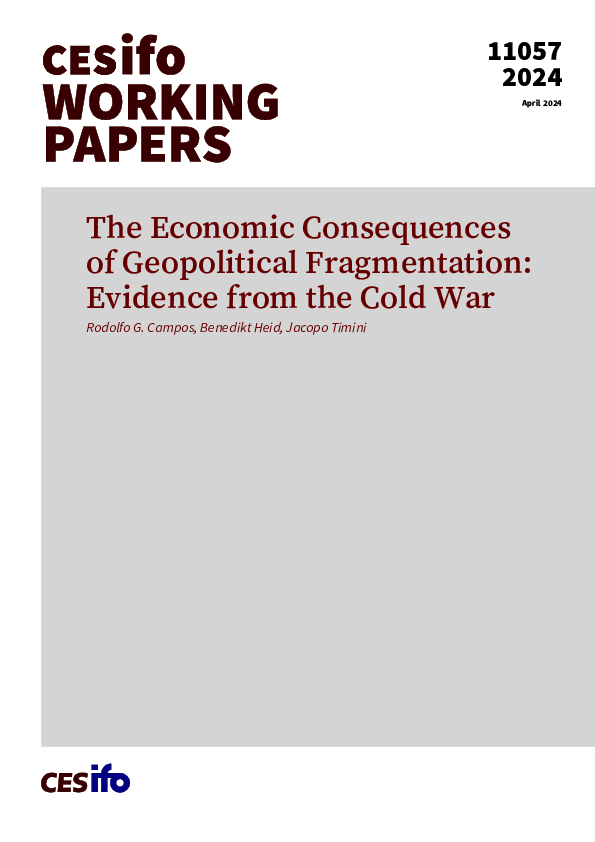The Economic Consequences of Geopolitical Fragmentation: Evidence from the Cold War
CESifo, Munich, 2024
CESifo Working Paper No. 11057

The Cold War was the defining episode of geopolitical fragmentation in the twentieth century. Trade between East and West across the Iron Curtain (a symbolical and physical barrier dividing Europe into two distinct areas) was restricted, but the severity of these restrictions varied over time. We quantify the trade and welfare effects of the Iron Curtain and show how the difficulty of trading across the Iron Curtain fluctuated throughout the Cold War. Using a novel dataset on trade between the two economic blocs and a quantitative trade model, we find that while the Iron Curtain at its height represented a tariff equivalent of 48% in 1951, trade between East and West gradually became easier until the fall of the Berlin Wall in 1989. Despite the easing of trade restrictions, we estimate that the Iron Curtain roughly halved East-West trade flows and caused substantial welfare losses in the Eastern bloc countries that persisted until the end of the Cold War. Conversely, the Iron Curtain led to an increase in intra-bloc trade, especially in the Eastern bloc, which outpaced the integration of Western Europe in the run-up to the formation of the European Union.